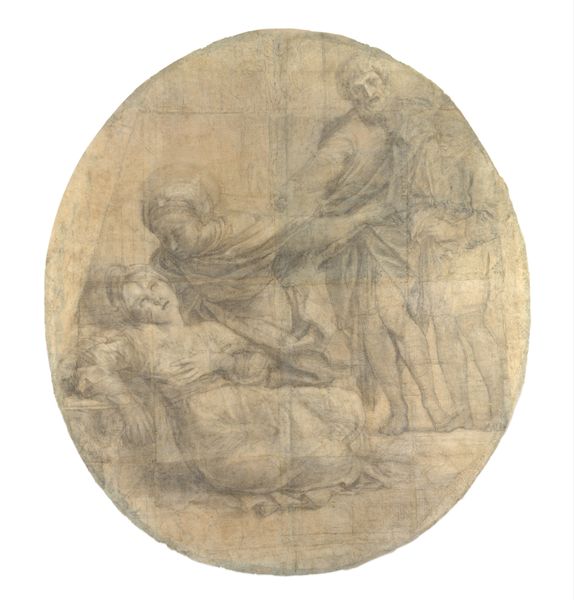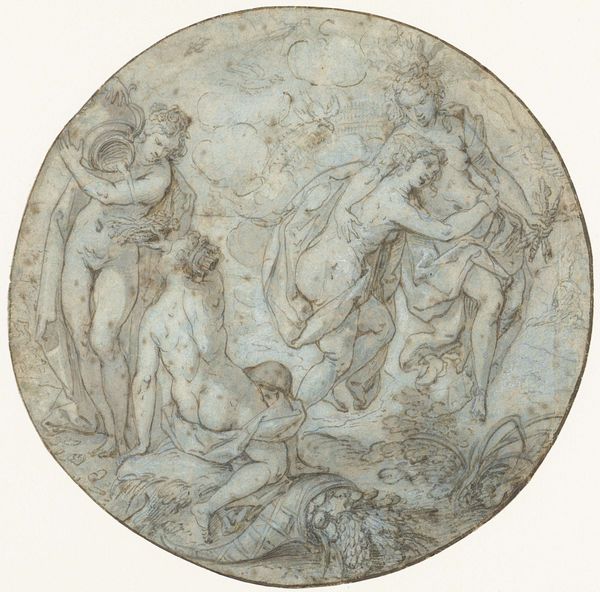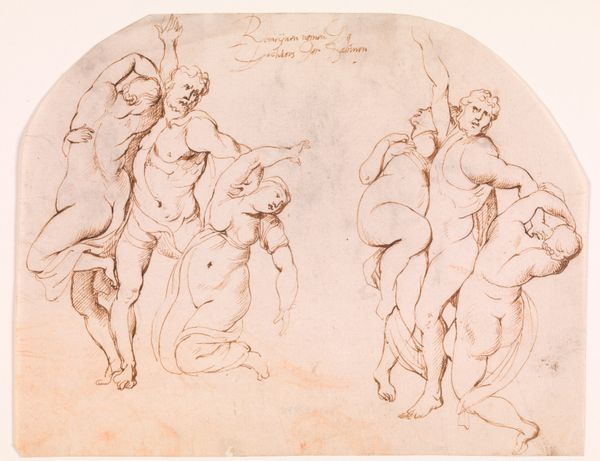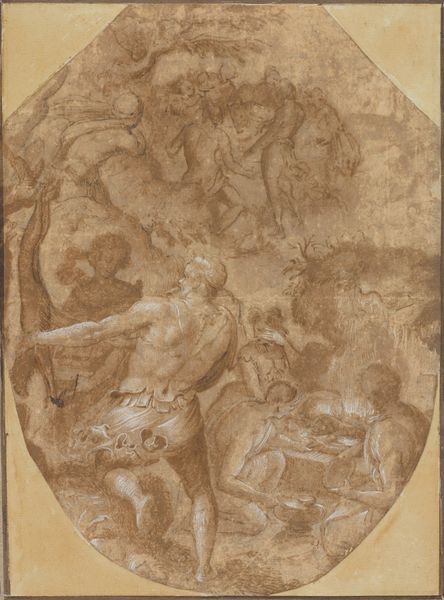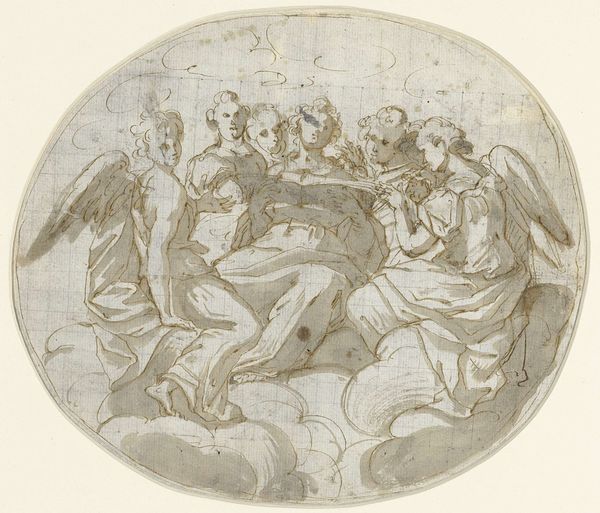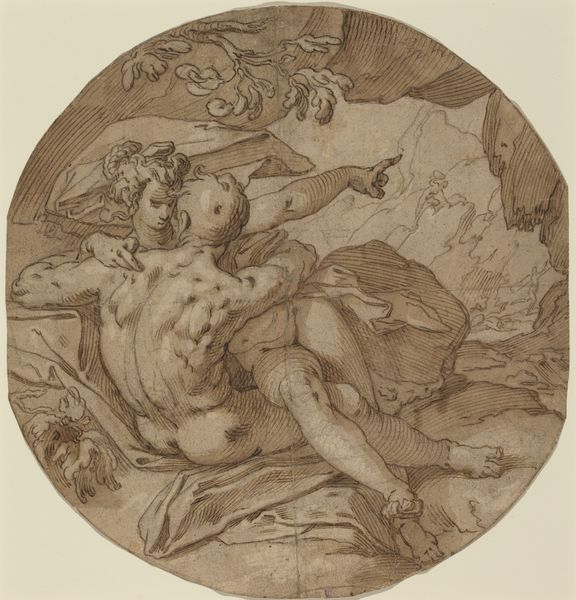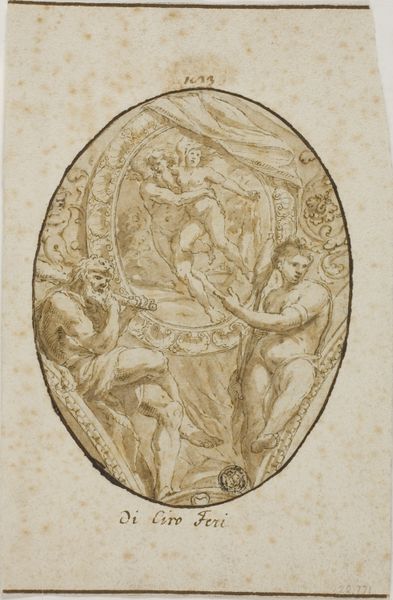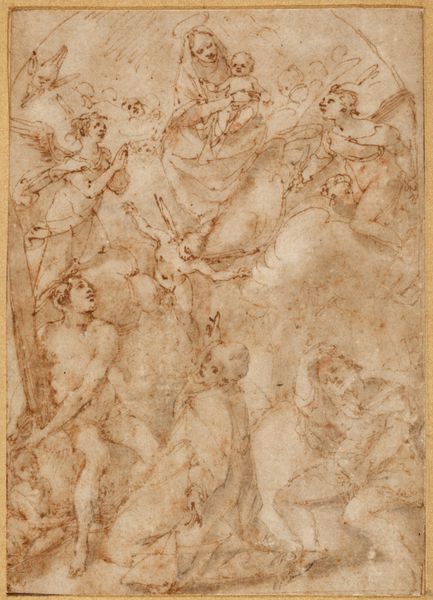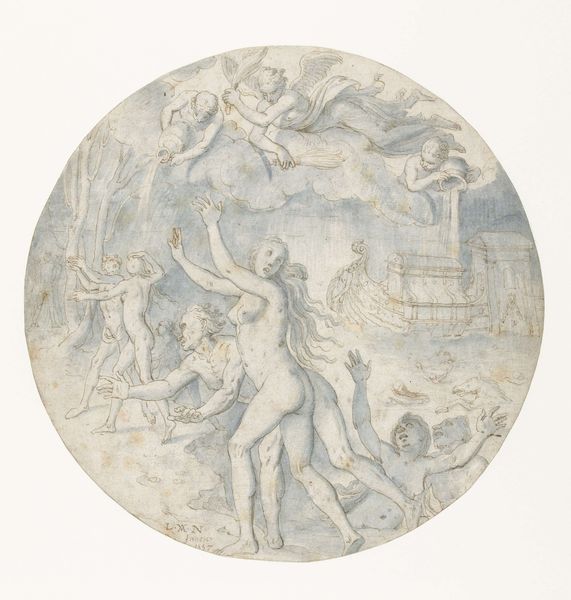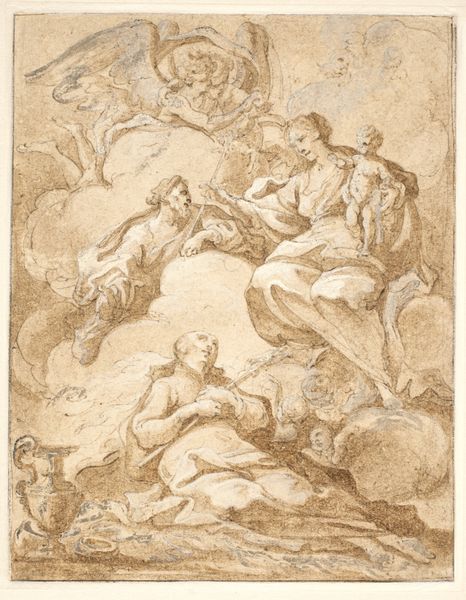
Florentia crowning Cosimo I enthroned on clouds 1511 - 1574
0:00
0:00
drawing, charcoal
#
portrait
#
drawing
#
charcoal drawing
#
figuration
#
oil painting
#
charcoal
#
history-painting
#
italian-renaissance
Dimensions: 142 mm (height) x 142 mm (width) (bladmaal)
Curator: First impression? It feels like a Renaissance fever dream, all flowing lines and vaguely unsettling power dynamics. Editor: Absolutely. What we're looking at is Giorgio Vasari's charcoal drawing, "Florentia Crowning Cosimo I Enthroned on Clouds," placing it somewhere between 1511 and 1574. Note the visual rhetoric deployed to solidify Cosimo's reign. Curator: Yes! And Florentia, personifying Florence, bestowing a laurel wreath upon Cosimo. The theatrical staging is so Vasari. He loved the drama. Almost camp, isn't it? All that fleshy billowing, floating on clouds... Makes you wonder what was in his wine. Editor: The very composition—Cosimo elevated above the viewer—reinforces hierarchies. Note how Florentia is active, yet subservient, her action serving to legitimize his rule. These artistic choices were instruments of power during the Renaissance. Curator: Instrument, exactly! That’s what it is –– stagecraft for political assertion. Did it work, though? Did people see this and think, "Oh, yes, divinely ordained ruler!" Editor: In the Renaissance, art and power were inextricably linked, shaping public perception and solidifying the Medici's position. Visual symbolism such as that was fundamental. Curator: And thinking about those floating figures, do you ever get the sense that some artworks just aren't meant for our grounded modern eyes? Like we are crashing a celestial party and everyone is too polite to say we aren’t on the guest list? Editor: Absolutely. These celestial figures and idealized forms communicate messages of legitimacy and timeless authority that are now viewed through a contemporary lens. It's critical to remember that interpretations shift over time and sociopolitical location. Curator: Right, what it *did* then is vastly different than how it reads now. It seems to shout that authority rarely comes naturally, doesn’t it? More often, it requires active visual and cultural construction. Even the Renaissance knew that! Editor: It is truly amazing to observe how artistic styles contribute significantly to shaping perceptions about legitimacy. This unveils fascinating ideas on societal dynamics and structures of governance that remain important even in this modern age.
Comments
No comments
Be the first to comment and join the conversation on the ultimate creative platform.


